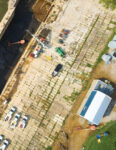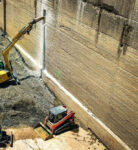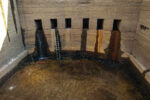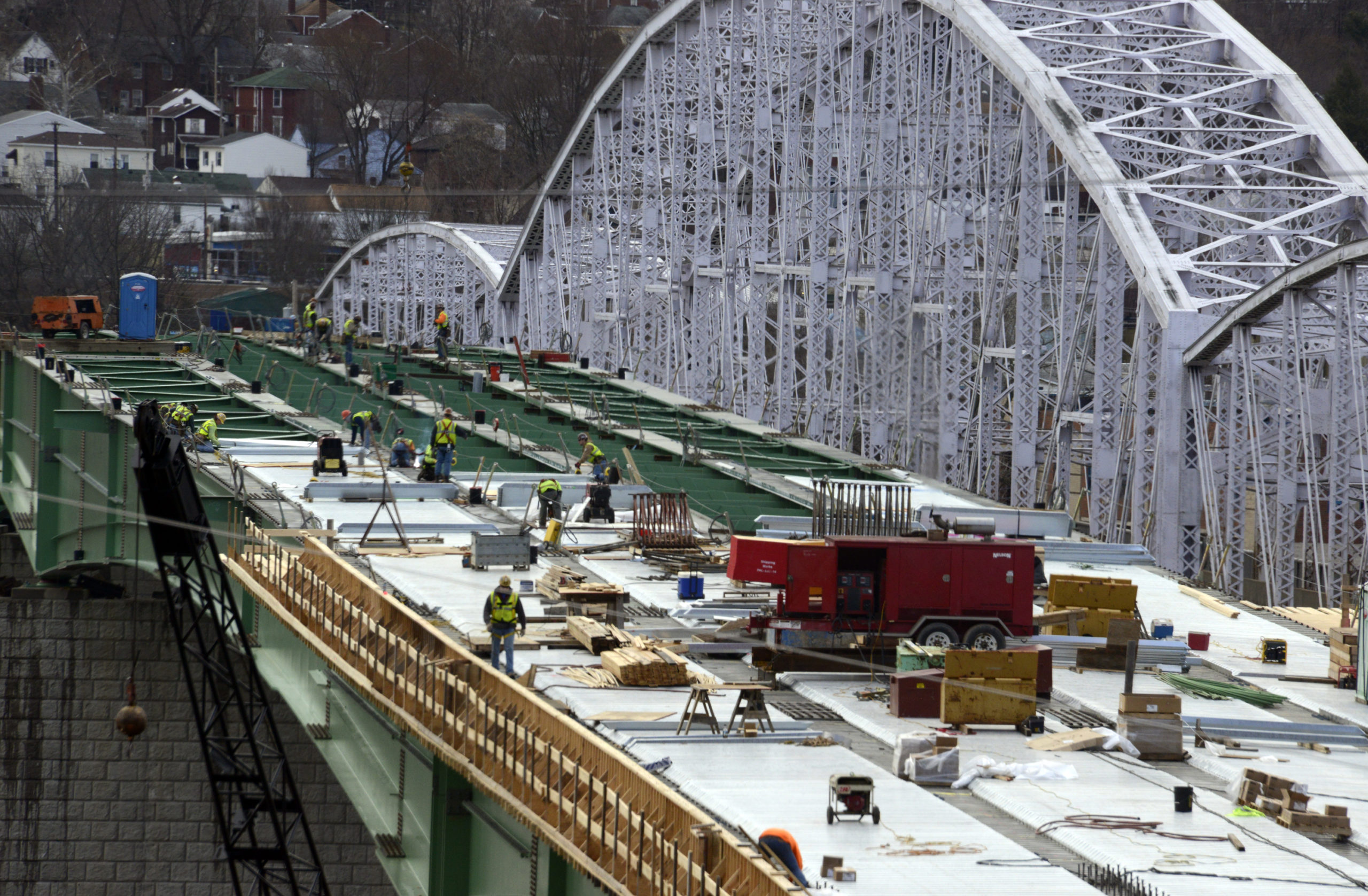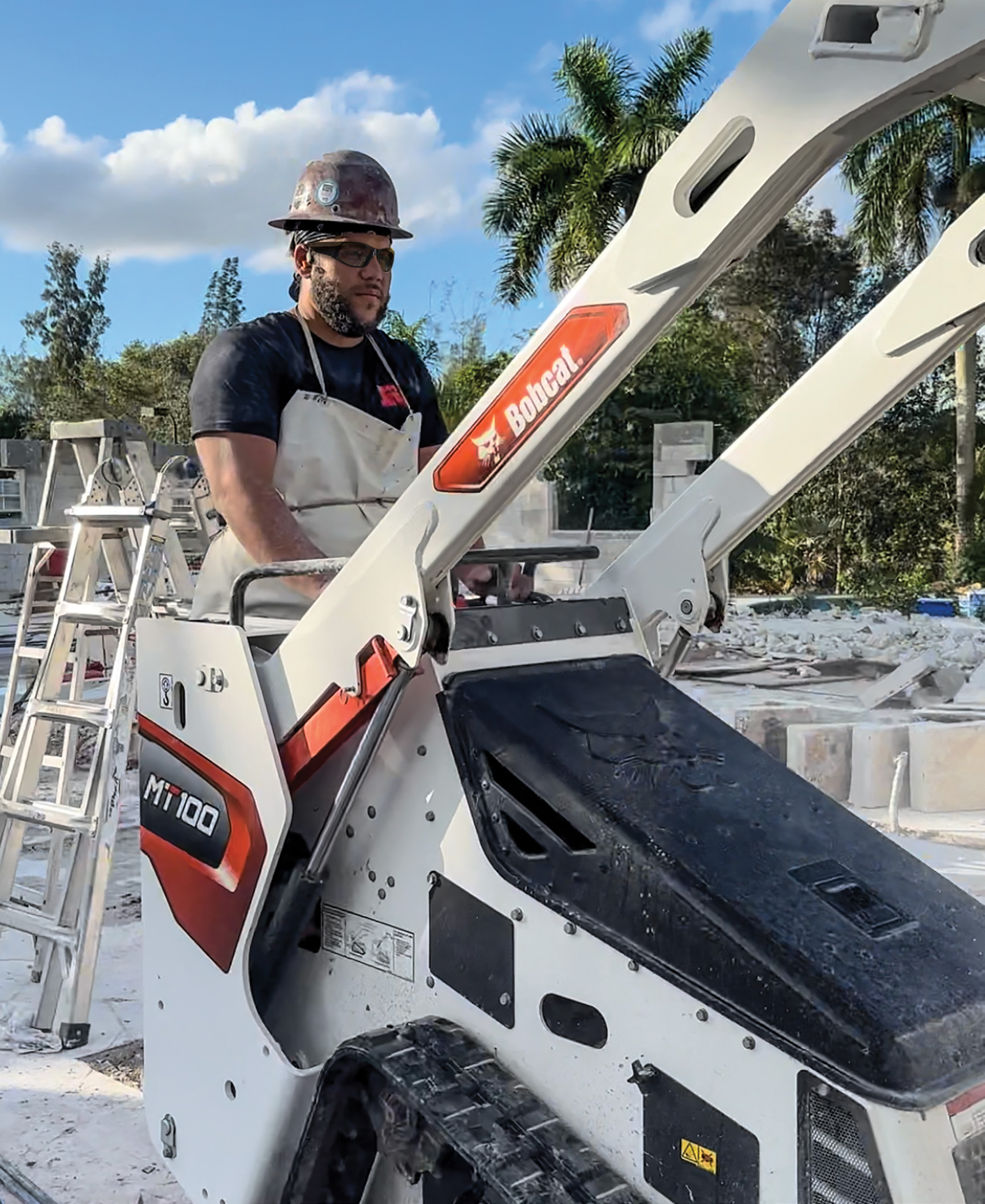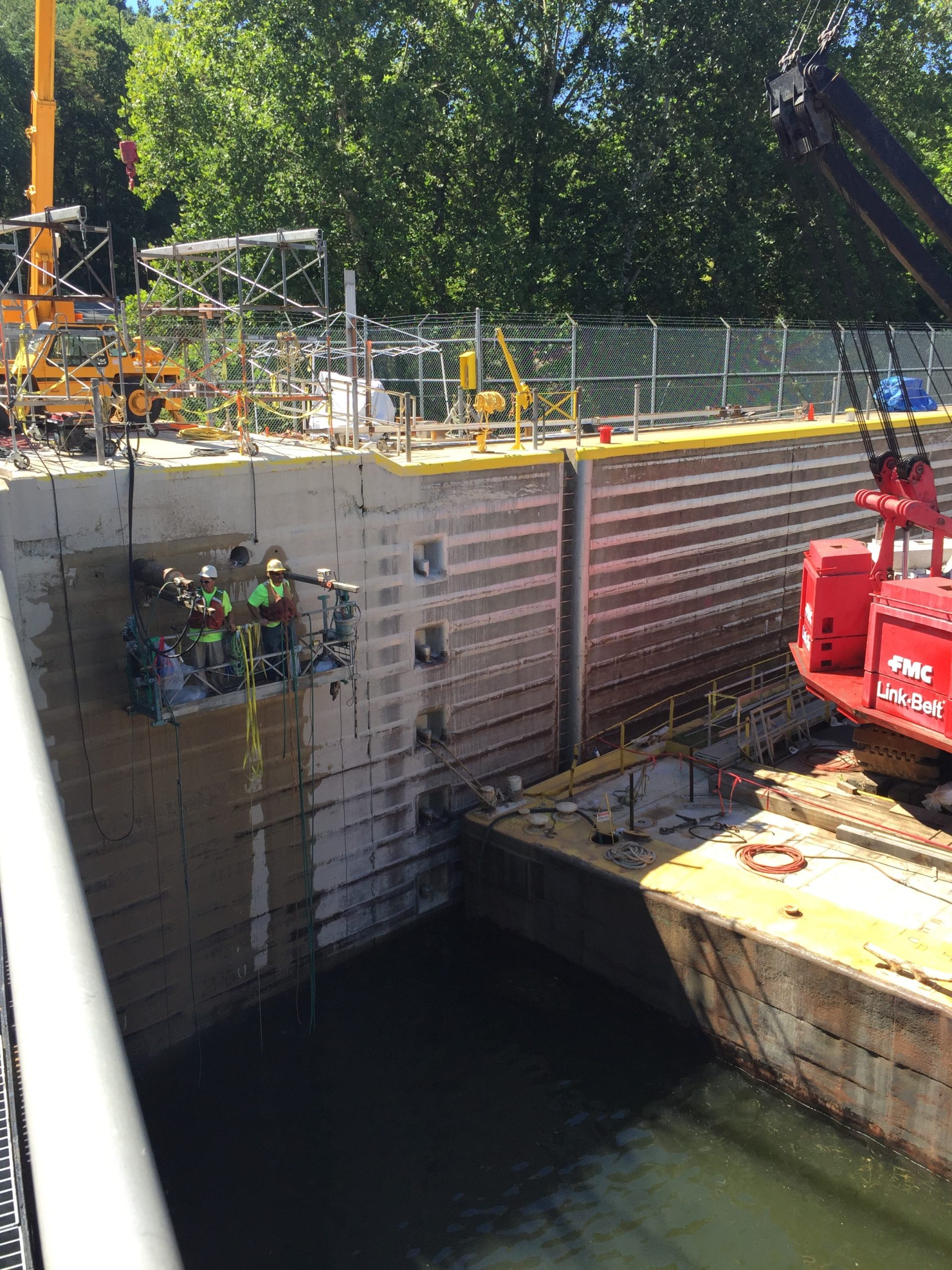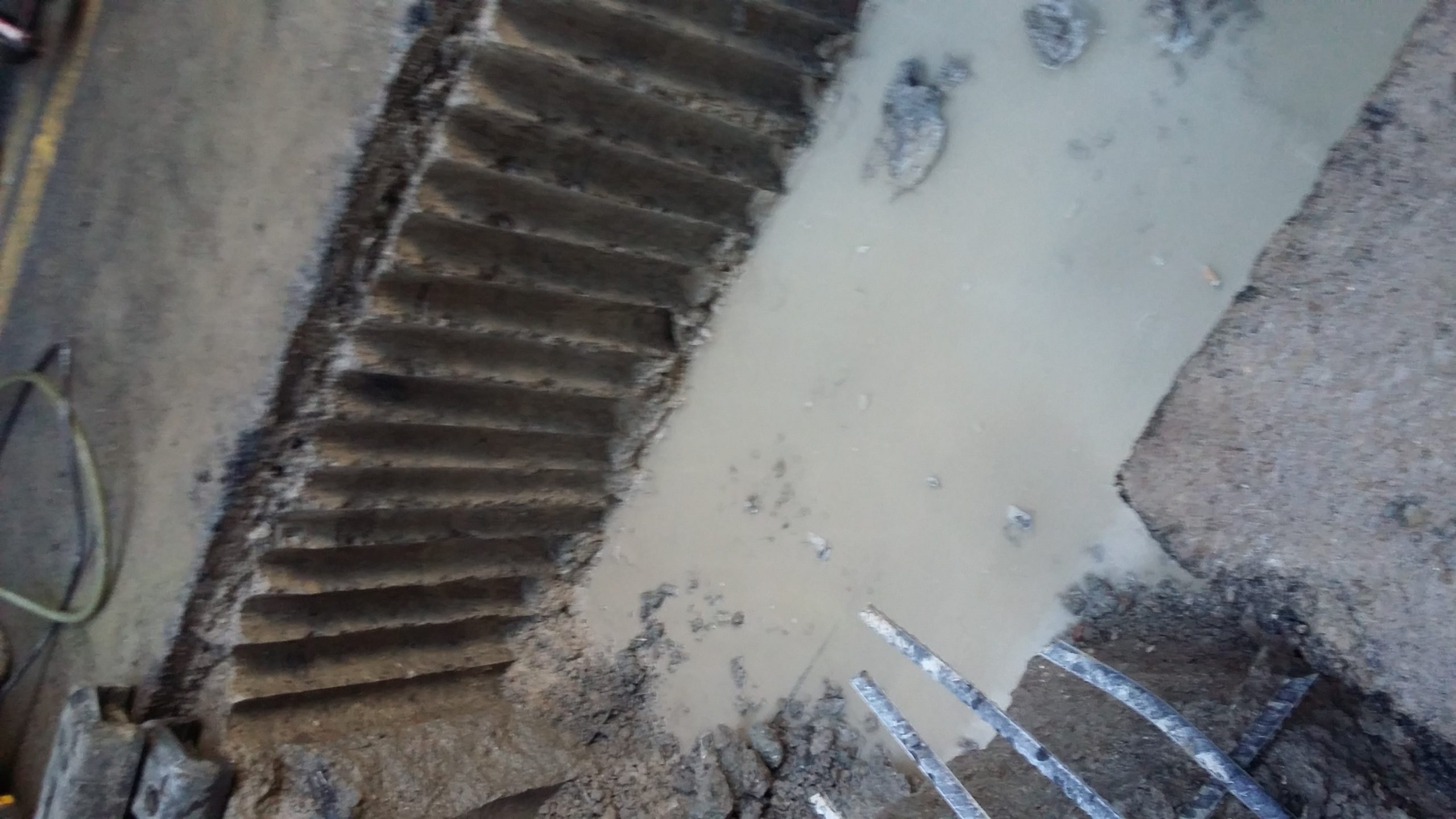
CSDA Member’s Part in Converting Lock and Dam into Hydropower Station
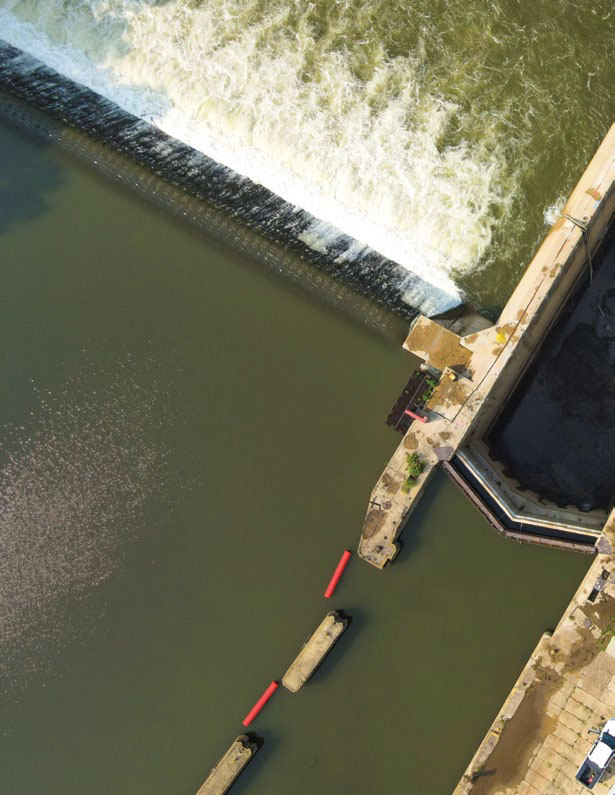
A lock and dam is a hydraulic engineering structure commonly found on rivers and canals. Its primary purpose is to facilitate the movement of boats, ships and other watercraft between different water levels along the waterway, and is accomplished through the integration of two key components: the lock chamber and the dam.
The lock chamber, a watertight enclosure, is the central feature of the system. It is equipped with gates at each end, which can be opened or closed as needed. When a boat enters the lock, the gates are sealed behind it. This isolation allows for precise control over the water level inside the chamber.
Adjacent to the lock chamber is the dam, a strategically designed barrier across the waterway. The dam serves several functions, with one of the primary purposes being to regulate the flow of water into the river or canal. This control is achieved through mechanisms like gates and valves, which can be adjusted to manage the volume and speed of water passing through.
- default
- default
- default
Converting a lock and dam into a hydroelectric power plant presents a range of benefits, mainly, this transformation allows for the repurposing of existing infrastructure. Lock and dam structures are typically situated on rivers or waterways with strong water flow, providing an ideal foundation for harnessing hydroelectric power. By retrofitting these facilities, there’s a significant reduction in the need to construct entirely new power generation sites.
Moreover, hydroelectric power is a clean and renewable energy source. It generates electricity by harnessing the kinetic energy of flowing water, producing minimal environmental impact. This makes it an environmentally sustainable option, contributing to efforts to reduce greenhouse gas emissions and combat climate change. This also leads to reduced environmental disruption compared to constructing entirely new dams and power plants. It avoids the ecological consequences of creating new reservoirs and impoundments, preserving local ecosystems and habitats.
In an endeavor to harness cleaner energy, CSDA member Concrete Coring Company of Central Kentucky was contracted to transform Kentucky River Lock and Dam #13 into a new, cleaner energy hydropower station. This project not only requires precision but also innovative methods using diamond tooling to ensure structural integrity while accommodating the new hydro-energy infrastructure.
For the installation of the hydropower equipment and to safeguard the lock and dam’s framework, selective demolition was determined to be the best method for this transformation. The methods employed were chosen as they stood out as the only viable options for this unique undertaking. The hydropower equipment required a flawless fit, leaving no room for compromise. Any alternative approach would have entailed a reengineering of the entire lock structure from the ground up.
Keyways for the gates within the lock walls were crafted through a combination of wall sawing and selective demolition. The majority of the selective demolition was performed with a Brokk. This precision work extended to the installation of the cable tray, a conduit for the wiring that powers the lock. Alterations to the bulkhead’s size were executed using CAT 336 and 308 excavators equipped with shears and hammers, Hilti wall saws for sawing and finally with removal with cranes.
Unpredictable floods in the region had already set the project back by a year. As the calendar veered into
fall and winter, the challenges escalated as the colder weather makes work much more difficult. The cofferdam,
a critical element in flood control, was reinforced with additional bracing to counteract the pressure surges that accompanied the river’s periodic floods, safeguarding the working area from potential flooding.
There was concern over both the flooding and working at heights for the Concrete Coring crew. Each day, equipment had to be carefully removed from the work area and then moved back to the working area the following day. With operations taking place on 60’ boom lifts, strict cabling measures were taken for added safety. Additionally, rigorous assessments of lifting capacities were conducted daily to ensure the lift could handle the weight of equipment and operators safely.
As the project marches forward, nearly 1000’ of wall sawing, reaching depths of up to 3’ will have been completed. The process of selective demolition is slated to yield 20 tons of concrete for removal. While the project remains a work in progress, it is currently on track and within budget. The Concrete Coring team’s performance has drawn the attention of the American Hydro Association (AHA), opening doors to future collaborations on similar projects.
Thus far, the progress of this endeavor has been nothing short of commendable. Despite the inherent dangers and formidable challenges, the team’s expertise and cutting-edge equipment have exceeded all expectations. The project stands as a testament to the company’s well-deserved reputation for excellence in the field. Their selection came on the heels of another concrete company’s inability to meet the project’s demanding standards, highlighting their unwavering commitment to quality and precision.
The transformation of Kentucky River Lock and Dam #13 into a hydropower station represents a remarkable undertaking in the realm of cleaner energy. The integration of hydroelectric power into existing lock and dam structures not only repurposes vital infrastructure but also aligns with the global push for sustainable energy sources. The execution of selective demolition and precision engineering by the Concrete Coring Company of Central Kentucky has showcased unparalleled expertise, overcoming unpredictable challenges such as floods and elevated work conditions. As the project progresses within budgetary constraints, it stands as a testament to the company’s commitment to excellence and innovation. The attention garnered from the American Hydro Association suggests potential collaborations on similar projects, the success of this undertaking and its significant contribution to
the evolving landscape of renewable energy.
The ongoing transformation of Kentucky River Lock and Dam #13 and others like it into a hydropower station not only signifies a groundbreaking venture in the realm of cleaner energy, but also emphasizes the critical importance of selecting a CSDA member for such transformative projects. The decision to enlist the expertise of the Concrete Coring Company of Central Kentucky has proven to showcase their ability to navigate and overcome the unpredictable challenges inherent in large projects such as this. The utilization of cutting-edge equipment highlights the distinct advantages of choosing a CSDA member for projects of this magnitude.
COMPANY PROFILE Concrete Coring Company of Central Kentucky has been serving Kentucky, Indiana, West Virginia and Tennessee for nearly 30 years. They have about 20 employees and their fleet ranges between 12-15 trucks and trailers. They offer core drilling, flat sawing, wall sawing, wire sawing and selective demolition. Their team’s specialty is innovation; whether it is means and methods or customizing equipment, their committed and creative team is why they are an industry leader. They have been a CSDA member since 2023. RESOURCES General Contractor Appalachian Hydro Associates CSDA Contractor Concrete Coring Company of Central Kentucky Contact for Story: Jessica Cornett Tel: 859-233-0367 Email: jessica@concretecoringcompany.com Website: www.concretecoringcompany.com Methods Used: Wall Sawing, Hand Sawing, Wire Sawing, Selective Demolition, Robotic Demolition











